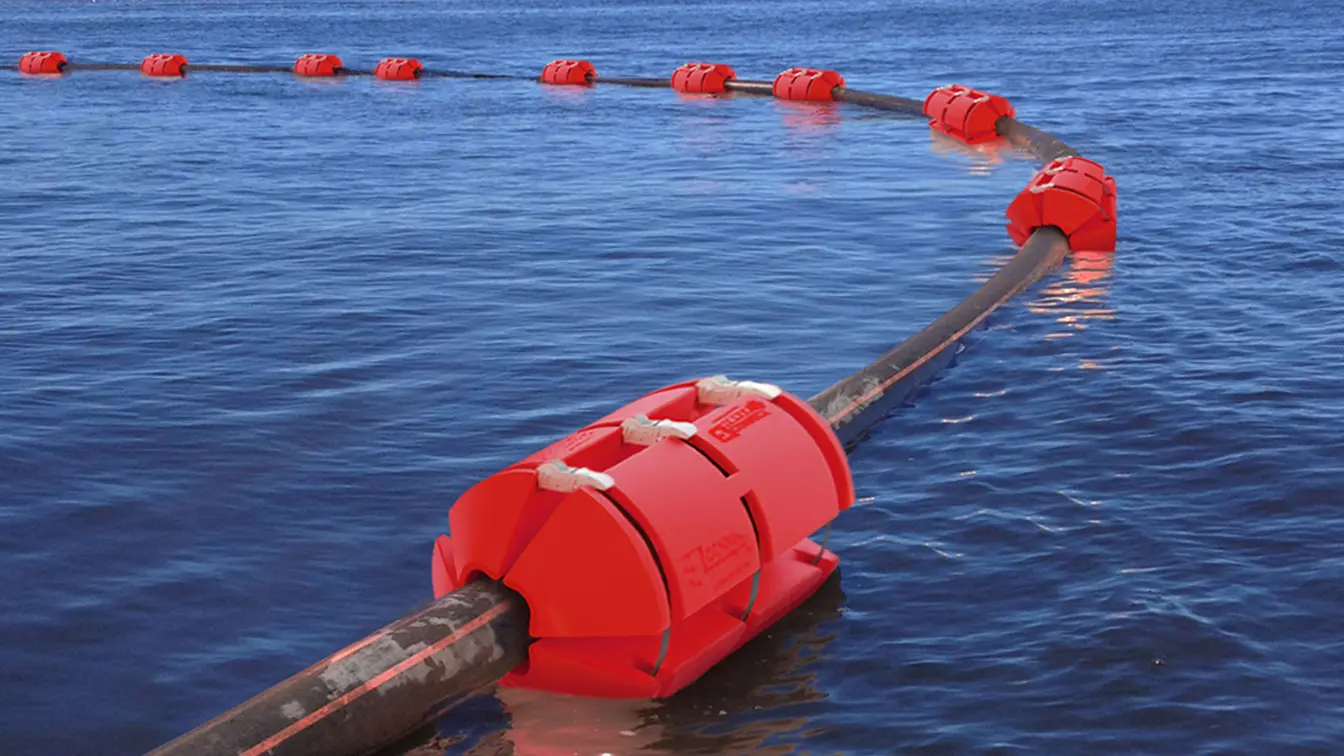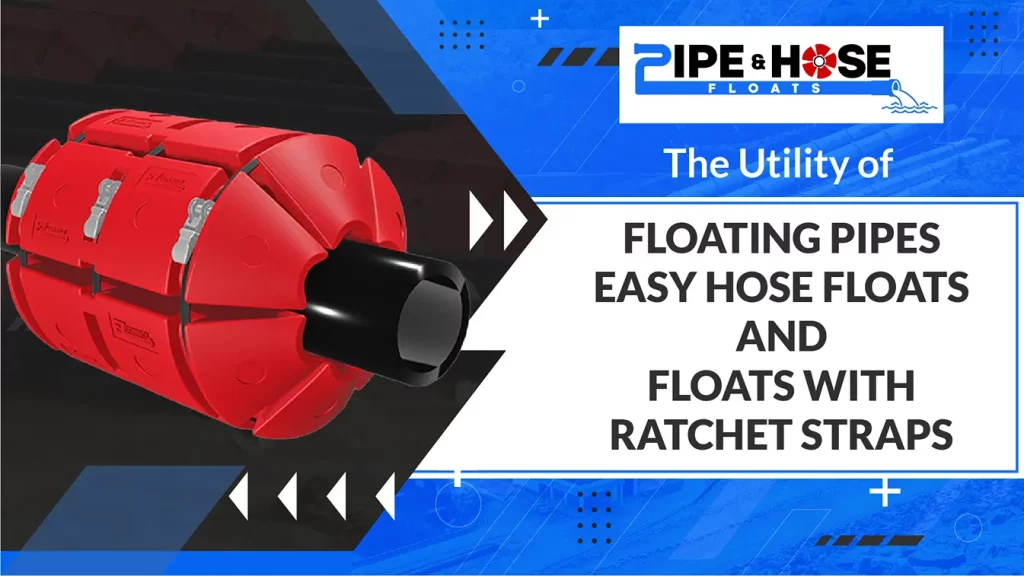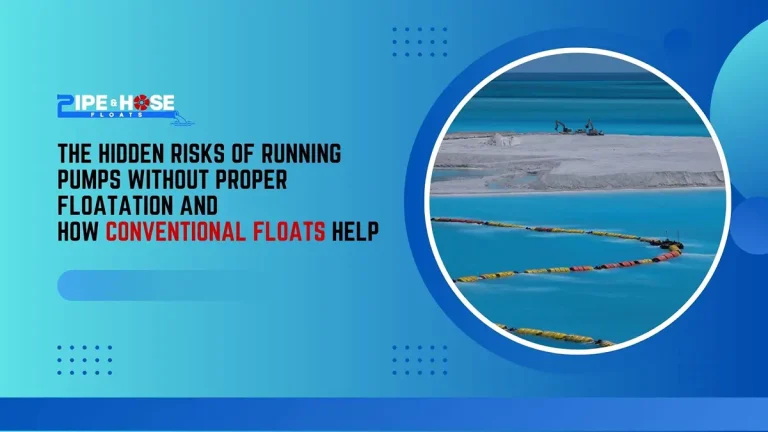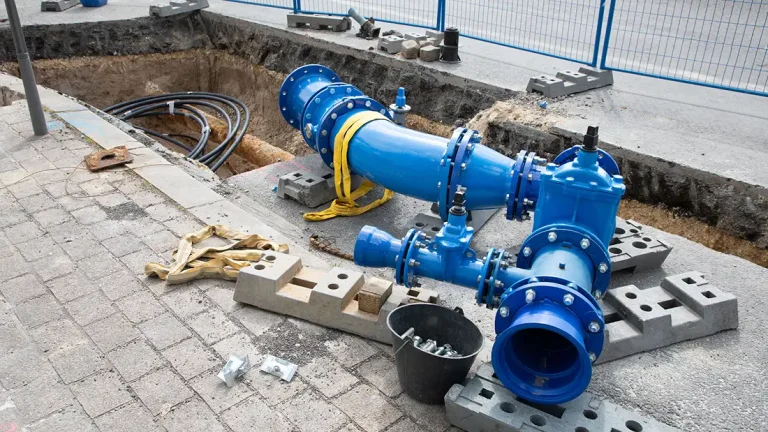The need for efficient, reliable, and adaptable solutions is ever-present in industrial operations’ diverse and dynamic world. Flotation solutions, including hose, pipe, and cable floats, have become crucial components in various sectors. These innovative tools enhance operational stability, efficiency, and cost-effectiveness, proving indispensable across industries such as dredging, marine operations, oil and gas, environmental management, and construction.
Hose floats, easy hose floats, and floats with ratchet straps offer unique features and benefits tailored to specific applications. Understanding their design, functionality, and advantages helps industries choose the best flotation solution for their needs, optimizing performance and ensuring smooth operations.




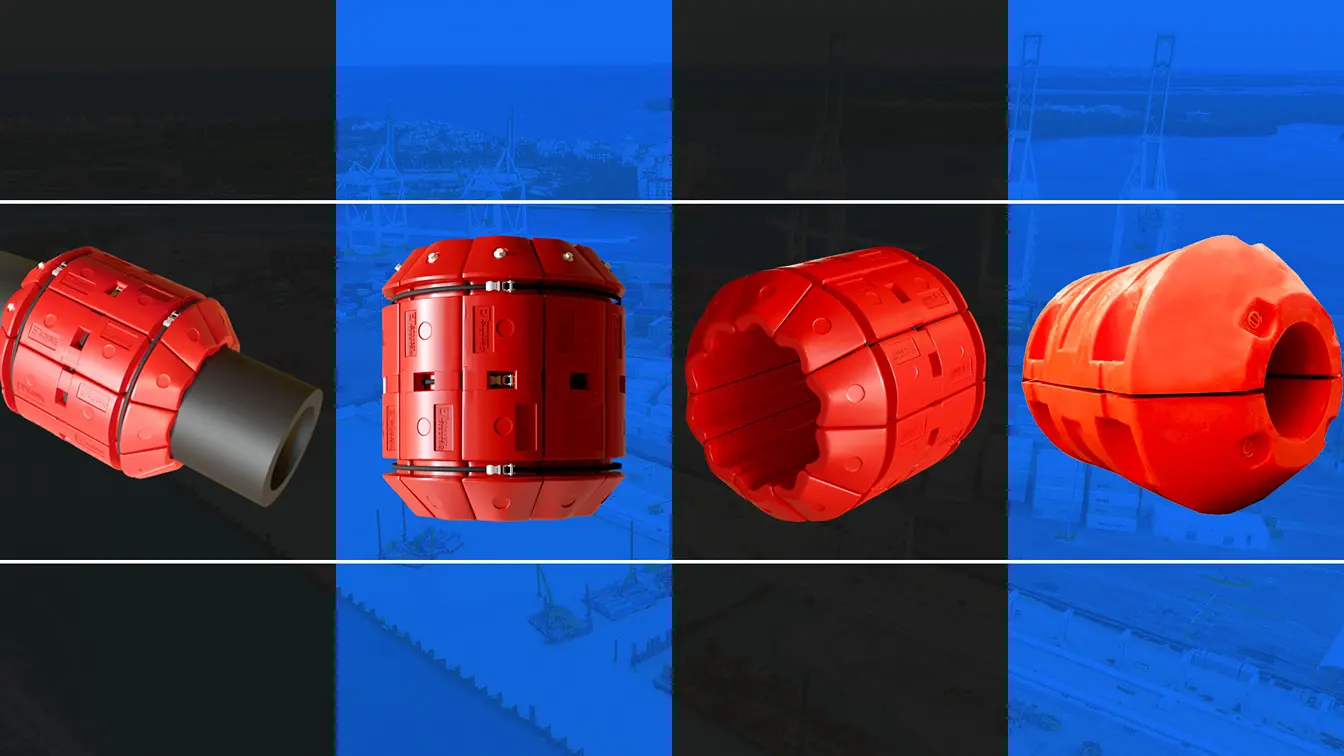
Understanding the Different Float Types
Floating Pipes
Floating pipes are essential for transporting fluids in various marine and dredging operations. They are designed to remain buoyant while carrying water, slurry, or other materials through challenging environments. Typically made from high-density polyethylene (HDPE), floating pipes are known for their durability, flexibility, and resistance to corrosion and abrasion. The design of floating pipes often includes built-in flotation devices or external floats attached at intervals to ensure consistent buoyancy. These pipes are used in dredging projects to transport sediment from the seabed to the shore, in mining operations to convey slurry, and in marine settings to manage water flows. Floating pipes’ robust construction allows them to withstand harsh conditions, including UV exposure, salt water, and fluctuating temperatures. Their versatility makes them suitable for temporary and permanent installations and provides reliable performance in various applications.Easy Hose Floats
Easy hose floats are versatile flotation devices designed for quick and straightforward installation. These floats are typically made from lightweight, durable materials such as polyethylene or polyurethane, providing excellent buoyancy and stability. They often support hoses, pipes, and cables in various aquatic environments. One of the main advantages of easy hose floats is their user-friendly design, which allows for rapid deployment and adjustment. They can be attached to infrastructure with minimal effort, reducing downtime and labor costs. Easy hose floats are particularly useful in temporary setups, such as emergency water management or short-term dredging projects, where speed and efficiency are paramount. The benefits of easy hose floats extend beyond their ease of use. Their modular design allows for flexibility in configuration, enabling operators to customize the flotation system to meet specific requirements. Also, easy hose floats resist chemicals, UV radiation, and physical impacts, ensuring long-lasting performance even in demanding conditions.Floats with Ratchet Straps
Floats with ratchet straps offer a secure and adjustable flotation solution for various industrial applications. These floats are designed to be attached to hoses, pipes, and other equipment using ratchet straps, which provide a tight and stable connection. This design ensures that the flotation devices remain securely in place, even under dynamic conditions. The installation process for floats with ratchet straps is straightforward. The ratchet mechanism allows for precise tensioning, ensuring the floats are firmly secured to the supported equipment. This feature is particularly beneficial in environments where stability and reliability are critical, such as offshore oil and gas operations or heavy-duty dredging projects. Floats with ratchet straps offer several advantages, including enhanced stability, ease of installation, and flexibility in application. The adjustable nature of the ratchet straps allows operators to fine-tune the buoyancy and positioning of the floats, optimizing performance for specific tasks. Additionally, the robust construction of these floats ensures durability and resistance to environmental factors, providing a reliable solution for long-term use.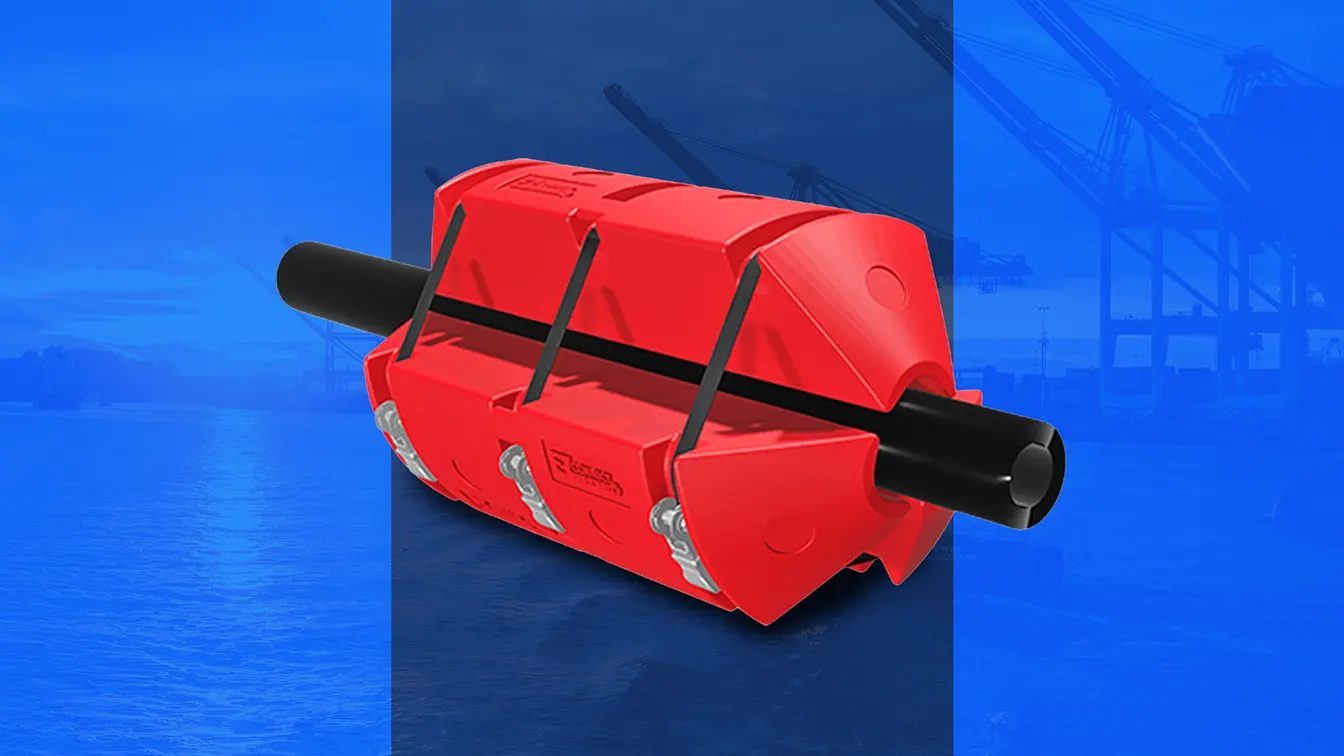
Benefits of Using These Floats
Enhanced Stability and Efficiency
One of the primary benefits of using hose, pipe, and cable floats is their enhanced stability and efficiency. By maintaining consistent buoyancy, these flotation solutions ensure that pipes, hoses, and cables remain properly positioned, reducing the risk of damage or operational disruptions. In dredging and marine operations, the stability these floats provide is crucial for maintaining the integrity of the transport system. Consistent buoyancy ensures that sediment and water flow smoothly through the pipes, minimizing the risk of blockages and improving overall efficiency. Similarly, in oil and gas operations, stable flotation systems help maintain the integrity of pipelines and reduce the likelihood of leaks or failures.Durability and Cost-effectiveness
Another significant advantage of hose, pipe, and cable floats is their durability. Made from high-quality materials such as HDPE, polyethylene, and polyurethane, these floats are designed to withstand harsh environmental conditions, including UV exposure, salt water, and physical impacts. This durability translates to a longer lifespan and reduced maintenance requirements, resulting in cost savings for operators. In addition to their long-lasting construction, these floats are cost-effective due to their ease of installation and minimal maintenance needs. The user-friendly design of easy hose floats and the precise tensioning capabilities of floats with ratchet straps reduce labor costs and downtime, further enhancing their value.Ease of Installation and Maintenance
A key benefit of using hose, pipe, and cable floats is the ease of installation and maintenance. The modular design of easy hose floats allows for rapid deployment and customization, while the ratchet mechanism of floats with ratchet straps ensures a secure and adjustable connection. These features simplify the installation process, reducing the time and effort required to set up and maintain flotation systems. Minimal maintenance requirements also contribute to the overall ease of use. The durable materials used in these floats are resistant to environmental factors, reducing the need for frequent inspections and repairs. This reliability ensures that operations continue smoothly with minimal interruptions, enhancing overall productivity.
Industrial Applications
Dredging and Marine Operations
In dredging and marine operations, hoses and easy floats are essential for transporting sediment, water, and other materials. These flotation solutions ensure that pipes and hoses remain buoyant and adequately positioned, facilitating efficient material transport and reducing the risk of blockages or damage. Hose floats are commonly used in dredging projects to transport sediment from the seabed to the shore, while easy hose floats support hoses and cables in marine environments. The stability and durability provided by these floats are crucial for maintaining the integrity of the transport system, ensuring smooth and efficient operations.Oil & Gas Industry
Floats with ratchet straps play a critical role in offshore and onshore operations in the oil and gas industry. These floats provide stable support for pipelines and hoses, ensuring consistent buoyancy and reducing the risk of leaks or failures. The adjustable nature of the ratchet straps allows operators to fine-tune the flotation system, optimizing performance for specific tasks. Floats with ratchet straps are particularly beneficial in offshore oil and gas operations, where stability and reliability are essential. Their robust construction and secure attachment ensure that pipelines and hoses remain properly positioned, minimizing the risk of environmental contamination and operational disruptions.Environmental Management
Hose, pipe, and cable floats are also used in environmental management applications, such as water treatment and conservation projects. These flotation solutions support pipes and hoses that transport water, wastewater, and other materials, ensuring consistent flow and reducing the risk of blockages or damage. In water treatment projects, hose floats and easy hose floats facilitate the transport of water and chemicals, ensuring efficient and effective treatment processes. In environmental conservation projects, these floats support hoses and pipes used for irrigation, water management, and habitat restoration, contributing to the project’s overall success.Construction and Mining
In construction and mining operations, hoses and accessible floats transport water, slurry, and other materials through challenging environments. These flotation solutions ensure that pipes and hoses remain buoyant and adequately positioned, reducing the risk of damage and improving overall efficiency. Hose floats are commonly used in mining operations to transport slurry from excavation to processing facilities. In contrast, easy hose floats support hoses and pipes in construction sites for water management and dewatering. The stability and durability provided by these floats are crucial for maintaining the integrity of the transport system, ensuring smooth and efficient operations.